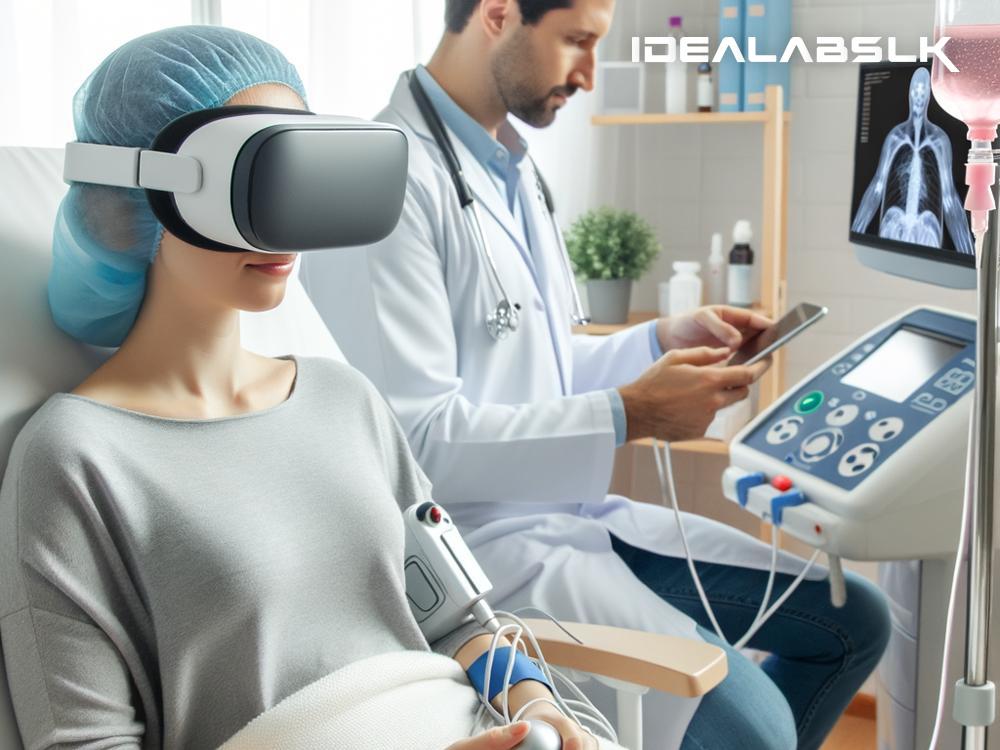In the realm of cancer treatment, where physical pain often walks hand in hand with emotional distress, the recent emergence of Virtual Reality (VR) offers a bright spark of hope. This innovative technology, once principally associated with the entertainment and gaming industries, is now revealing its tremendous potential in medical applications, particularly as a novel method for pain relief during cancer treatments. The journey into understanding how VR assists in this critical area is not just fascinating; it's a beacon of hope for millions.
Understanding the Pain in Cancer Treatments
Before delving into the role of VR, it's crucial to understand the nature of pain in cancer care. For many patients, treatments such as chemotherapy, radiation, and surgery, while life-saving, come with a heavy toll. These procedures can provoke significant discomfort and pain. Moreover, there's the often-overlooked aspect of psychological pain—fear, anxiety, and stress—that also amplifies the physical pain experienced by patients.
The Emergence of Virtual Reality as a Solution
Virtual Reality technology creates immersive, computer-generated environments that can transport users to places or situations far removed from the stark reality of cancer treatment rooms. By donning a VR headset, patients are invited into worlds limited only by imagination. Whether it’s exploring coral reefs, walking through serene forests, or floating in outer space, VR offers an escape, a temporary respite from the rigors of treatment.
How VR Helps with Pain Relief
Research indicates that VR can significantly impact pain relief, functioning on multiple levels. Here's a closer look at how it accomplishes this important task:
-
Distraction Theory: The basis of VR's effectiveness in pain relief is fairly straightforward. The immersive experiences provided by VR technology effectively divert a patient's attention away from the pain. It's akin to the concept of distraction, where the brain's focus is shifted to stimuli other than pain. By fully engaging the senses in a virtual world, there is less mental bandwidth available to process pain signals.
-
Stress Reduction: VR experiences often incorporate elements designed to promote relaxation, such as guided meditations or peaceful, natural settings. This not only provides a soothing escape from the clinical environment but also helps reduce stress and anxiety—factors that can exacerbate pain perception. Lowering stress levels has a direct, positive effect on how patients experience pain.
-
Enhancing Patient Control: A cancer diagnosis can often leave patients feeling powerless, a sentiment that contributes to emotional distress. Through VR, patients can regain a sense of control, choosing the environments they wish to explore and the experiences they want to have. This empowerment can translate into a stronger feeling of agency over their treatment process and, by extension, their pain management.
Real-world Impact and Patient Experiences
Patients and healthcare providers alike attest to the transformative impact of VR in cancer care. Anecdotal evidence and growing bodies of research highlight not just reduced pain levels but also improvements in overall patient well-being and treatment tolerance. Patients report feeling more relaxed, optimistic, and mentally prepared to face their treatments after VR sessions.
Future Horizons
The integration of VR into pain management strategies for cancer patients is still an evolving frontier. Ongoing research aims to refine our understanding of its mechanisms, determine optimal usage protocols, and expand its applications. The future holds promise for personalized VR content tailored to individual patient needs and preferences, ensuring even greater efficacy in pain management.
Uniting Technology with Compassion
At its core, the use of VR technology in helping with pain relief during cancer treatments represents the intersection of innovation and compassion. It demonstrates a holistic approach to patient care that acknowledges the complexity of pain—it's not just a physical symptom to be managed but an experience deeply intertwined with emotional and psychological well-being.
As we continue to explore and understand the full capabilities of VR in medical contexts, its role in improving the lives of those undergoing cancer treatment is undeniable. By providing a much-needed escape, reducing stress, and giving a sense of control back to patients, VR technology is not merely a tool for distraction. It's a companion in the fight against cancer, a source of light in moments of darkness.
In conclusion, the emergence of Virtual Reality as a means of pain relief during cancer treatments underscores an exciting era of healthcare innovation. It offers more than just a technological advancement; it represents a more compassionate approach to patient care, where comfort, relief, and hope are just as critical as the treatments themselves. As VR continues to evolve and integrate into healthcare settings, its potential to transform patient experiences during such challenging times is immense. This blending of cutting-edge technology with the most humane aspects of care is a powerful testament to the progress we can achieve when empathy guides innovation.

